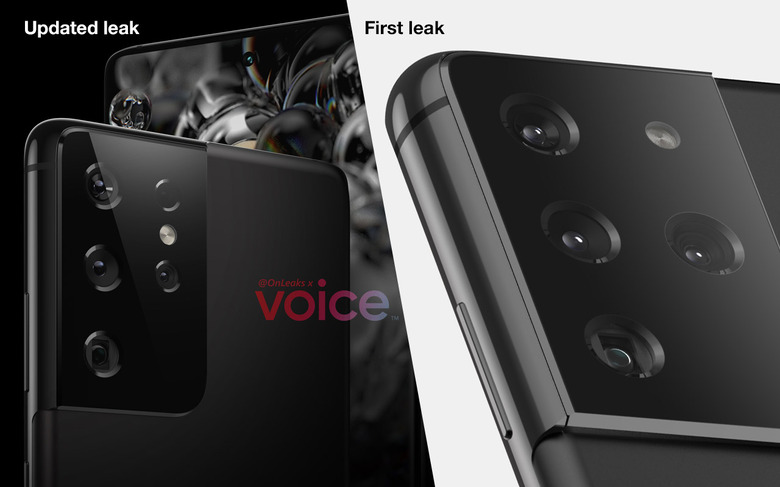Samsung Galaxy S21 Ultra May Have Most Wild Camera Array Yet
A set of images revealed this week show the Samsung Galaxy S21 Ultra with a previously unknown sensor. This new sensor sits among four cameras – and may be part of a 5-camera array. This newest set of images shows the Samsung Galaxy S21 Ultra with a corner-set camera array with four circles in a square, interrupted by an LED flash, and a fifth (likely telephoto lens) just below.
The Samsung Galaxy S21 Ultra images we see today come from an update from leaker OnLeaks. This latest update brings notes on the rear camera configuration from the penultimate design stage before mass production of the smartphone – AKA the prototype stage tagged DVT, Design Validation Test.
As it often is with leaks of this sort, the design reflects the ultimate hardware design of the machine. The drawings references by OnLeaks do not likely include specific details on the software included with the device. As such, there's always a chance that Samsung could put an array of flashlight bulbs in the circles at the back of the phone – but the most likely scenario is that there'll be 5 cameras or 4 cameras and a new sensor.
In the Samsung Galaxy S20 Ultra 5G, the device has four lenses and an LED flash. This includes a 108MP main sensor, a 48MP periscope telephoto lens, a 12MP ultrawide lens, and a TOF sensor (3D depth sensor). The configuration of the sensors looks a lot like what we saw with the earliest renders of the Galaxy S21 Ultra.

The next Samsung phone will likely work with the recently-revealed 108MP ISOCELL Bright HMX sensor. That would be an upgrade from the HM1 sensor in the Galaxy S20 Ultra. It's entirely possible that the Samsung Galaxy S21 Ultra will work with a newly developed Samsung "ISOCELL Vizion" 3D ToF sensor. Samsung filed for registration of the trade mark for "ISOCELL Vizion" with EUIPO on September 18, 2020.
The ISOCELL Vizion trademark was registered for Time-of-flight (TOF) sensors and Dynamic Vision Sensor (DVS) tech "in the nature of motion sensors for smartphones" (and a whole bunch of other products, of course, as is the nature of a trade mark registration). It wouldn't make sense for Samsung to have a smartphone with more than one 3D sensor on it, would it? Or is that the same sort of shortsightedness as suggesting a smartphone couldn't possibly need more than one camera lens?
